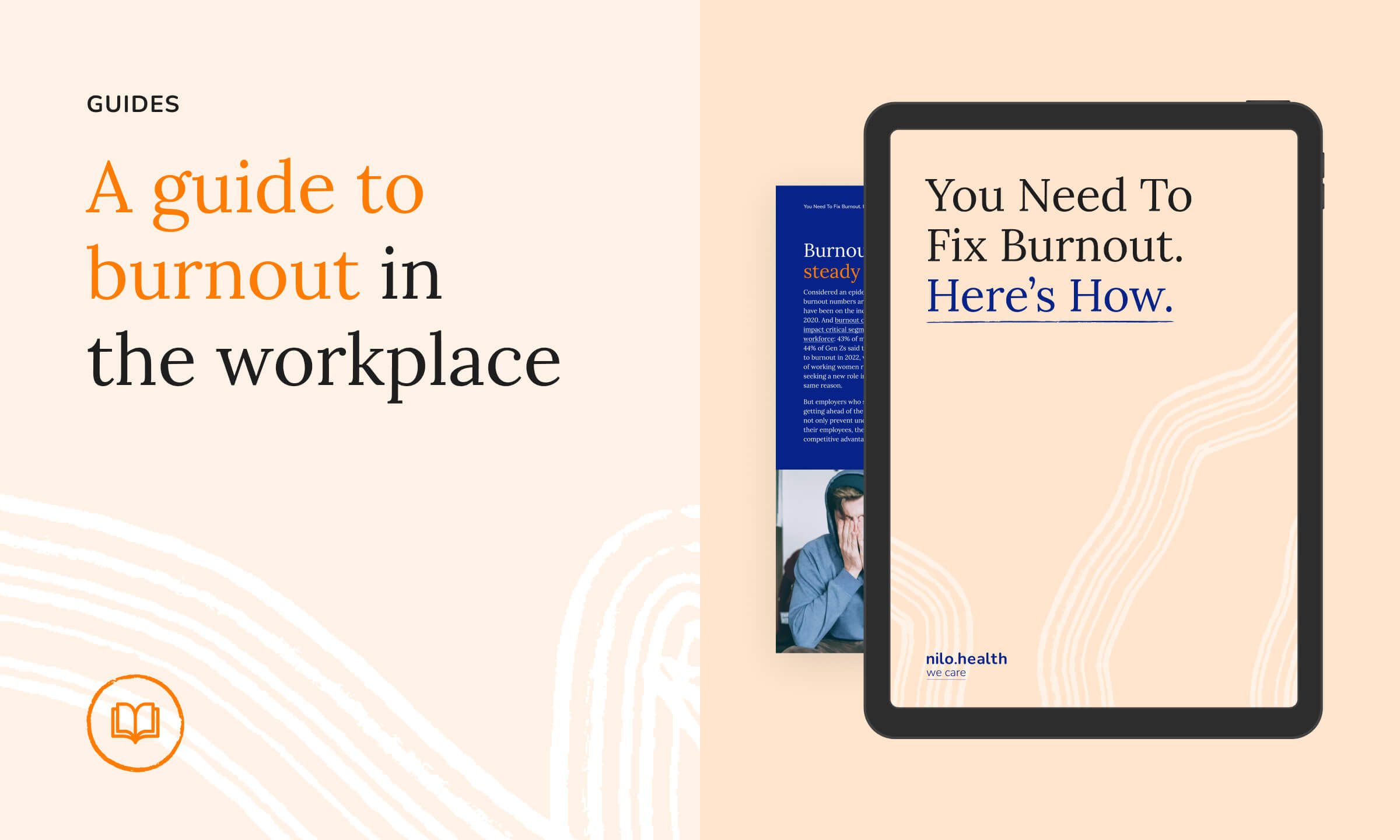You might have heard about the workplace crisis sweeping companies. Our best people are quitting. Productivity is diving. Morale is low. But what is it? To beat this crisis, you have to understand burnout – and that means knowing what burnout is and where it comes from, as well as how to fix it.

Burnout is a growing concern in the modern workplace, affecting the mental and physical health of employees, productivity, and overall job satisfaction. In this guide, we will discuss the definition of burnout, its symptoms, causes, and provide tips for managing employees who are suffering from it, as well as strategies for avoiding and preventing burnout.
Help me understand burnout!
Burnout is a state of physical, emotional, and mental exhaustion caused by prolonged stress and dissatisfaction in the workplace. It is characterized by feelings of cynicism, detachment, and a sense of ineffectiveness.
Burnout symptoms
Common symptoms of burnout include feelings of exhaustion, decreased motivation and engagement, decreased job satisfaction, increased cynicism and negativity towards work, and physical symptoms such as headaches and stomach problems.
Managing employees suffering from burnout
Employers can support employees who are suffering from burnout by encouraging them to take time off, improving communication, promoting a healthy work-life balance, and providing resources for stress management and mental health support.
Overcoming burnout is a process, and it can take time.
Overcoming burnout
Individuals who are experiencing burnout can recover by taking a break, practicing self-care, seeking professional help, and making lifestyle changes to improve their overall well-being.
Here are some further tips for overcoming burnout:
- Take a break: Taking time off from work, even if it’s just a few days, can help individuals recharge and refocus.
- Practice self-care: This can include activities such as exercise, meditation, and spending time with loved ones.
- Seek professional help: Talking to a therapist or counselor can help individuals better understand and manage their burnout.
- Make lifestyle changes: This can include eating a healthy diet, getting enough sleep, and reducing alcohol and caffeine consumption.
- Set boundaries: It’s important to establish clear boundaries between work and personal life, and to stick to them.
- Prioritize self-care: Making self-care a priority can help individuals maintain their mental and physical health.
- Seek support: Talking to friends, family, or coworkers can provide support and help individuals feel less isolated.
- Reframe negative thoughts: Reframing negative thoughts and focusing on positive experiences can help individuals feel more resilient and motivated.
- Find meaning and purpose: Engaging in activities that are meaningful and fulfilling can help individuals feel more satisfied with their lives and less burnt out.
Remember, overcoming burnout is a process, and it can take time. By seeking support, making lifestyle changes, and prioritizing self-care, individuals can regain their energy and motivation, and overcome burnout.
Typical causes of burnout
Excessive workload: Overloading employees with too much work, or unreasonable deadlines, can lead to burnout. This can be compounded by a lack of resources or support to help them manage their workload.
Lack of control: When employees feel that they have no control over their work, or that their work is not aligned with their values and goals, it can lead to burnout. This can be caused by micromanagement, unrealistic expectations, or a lack of autonomy.
Lack of support: A lack of support from management, colleagues, or the organization can lead to feelings of isolation and overwhelm, which can contribute to burnout.
Poor work-life balance: When employees are expected to be available and on-call at all times, or when they are not given adequate time off, it can lead to burnout.
Unclear expectations: Ambiguous or constantly changing job expectations can lead to confusion and stress, which can contribute to burnout.
Unresolved conflicts: Persistent conflicts with colleagues, clients, or customers can create a toxic work environment, leading to burnout.
Poor organizational culture: A toxic workplace culture, where employees are not valued or treated fairly, can contribute to burnout.
It’s important to note that burnout is a complex issue, and can be caused by a combination of these factors. By understanding the causes of burnout, employers and employees can work together to create a supportive work environment and prevent burnout from happening.
How can companies avoid and prevent burnout amongst their employees?
Preventing burnout in the workplace is an important responsibility for employers. Here are some steps employers can take to prevent burnout:
- Assess workload: Regularly assess the workload of employees and make adjustments to ensure that it is manageable and not excessive.
- Offer support: Provide employees with the resources and support they need to complete their work, including access to counseling services, time off, and flexible schedules.
- Encourage work-life balance: Promote a healthy work-life balance by providing adequate time off and encouraging employees to take breaks throughout the day.
- Foster a positive work culture: Create a positive and supportive work culture where employees feel valued and heard. This can include regular check-ins, open communication, and opportunities for professional growth.
- Provide training: Offer training on topics such as stress management, time management, and self-care to help employees better manage their work and prevent burnout.
- Offer feedback: Provide regular, constructive feedback to employees to help them understand their strengths and areas for improvement.
- Address conflicts: Address conflicts in the workplace promptly and effectively to prevent them from escalating and leading to burnout.
- Promote healthy habits: Encourage employees to adopt healthy habits, such as exercise and healthy eating, by offering wellness programs and initiatives.
- Introduce a mental health benefit for employees… like nilo!
In conclusion, burnout is a serious issue that affects the health, productivity, and satisfaction of employees. By understanding its causes and symptoms, and providing support and resources for recovery, employers can help prevent and manage burnout in the workplace. Consider using nilo programs like “Prevent Burnout in Your Team”, which offers tools and resources to help leaders recognize, handle, and prevent work burnout. For employees, 1:1 sessions with psychologists help individuals better understand their mental health needs and learn valuable burnout-prevention skills. Take action today to prevent burnout in your company!







